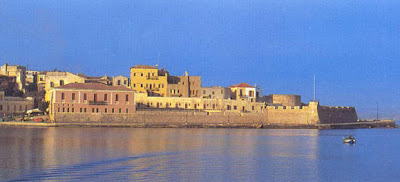Chania Municipal Market (Agora)

Chania Municipal Market was built in 1913 as vegetable, fish and meat market for the city of Chania. It officially opened to the public 3 days after the union of the island of Crete with Greece. The architect, Konstantinos Drandakis, built the market where the mortar of the southern venetian walls were. This is evident by the difference of height between the north and south entrance to the building. During the Nazi occupation, most of the marketplace was used as a storage space for the German army. Today, although there are some shops selling local products, there are also many souvenir stores. Chania Municipal Market is considered today as one of the most important tourist attractions. Entrance is free.

